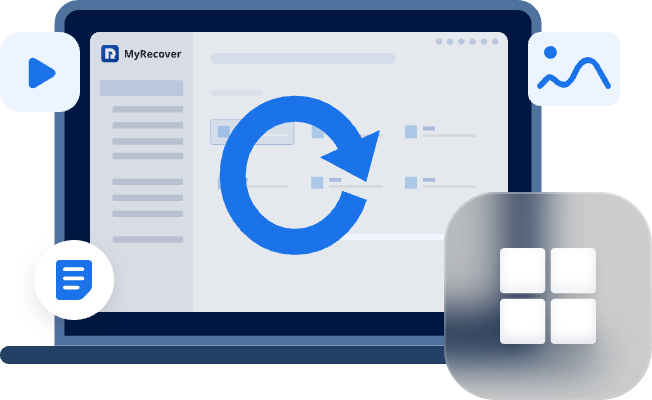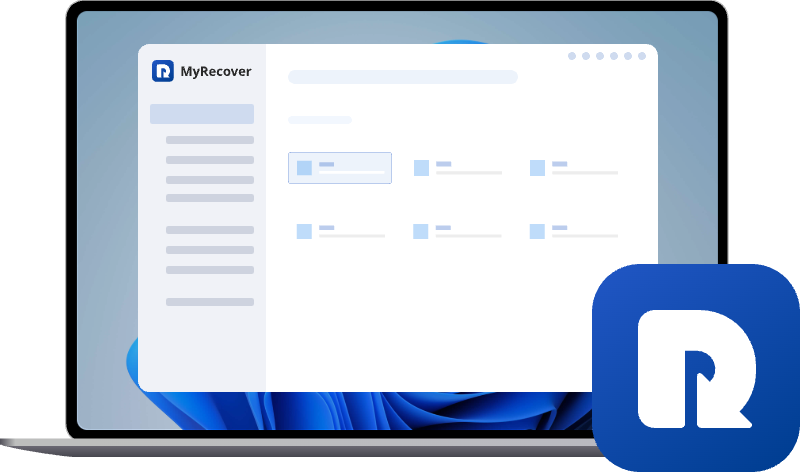Easily Recover Files After Clean Install Windows 10 (Without or With Backup)
A clean installation of Windows 10 can erase all your personal data. This article shows how to recover files after a clean install of Windows 10, even if no backup exists. You’ll discover practical solutions such as using system restore tools, and trying data recovery software to bring back deleted or missing files safely and efficiently.
Will a Clean Windows Install Delete My Files?
A clean install is a complete reinstallation of the Windows operating system.Itis usually performed when your system becomes slow, unstable, keeps crashing with various error messages like Non-system disk or disk, or infected with malware — or when you want to start fresh after major hardware or software issues.
The process involves formatting the system drive (usually the C: drive) and then installing a fresh copy of Windows from scratch.Unlike a reset or repair installation, a clean install does not keep your previous programs, settings, or personal files. It’s like giving your computer a factory reset — everything starts over.
So, yes, a clean Windows install will delete your personal files on the system drive.
How to Recover Files After Clean Install Windows 10 with Backup?
Recovering files after a clean Windows installationcan be quite easy if you’ve previously created a backup. Two of the most common backup methods in Windows 10 are File History and Backup and Restore (Windows 7). Both allow you to restore personal files like documents, photos, videos, and more, even after a system drive format.
Additionally, if you have created a system image, you can restore personal files by mounting the image and manually copying the backup files. However, this process can be challenging for most users, so it is not recommended as the first choice.
1: Recover Using File History
File History is an automated backup feature in Windows that continuously saves copies of your personal files on an external drive or network location. If it was enabled before the clean install, you can restore files easily.
Step 1. Connect the drive where File History backups are stored.
Step 2. Press "Win + S", type "Control Panel" in the search box, and hit "Enter".
Step 3. Navigate to "System and Security → File History → Restore your files with File History".
Step 4. Browse through folders or search for specific files in the File History home window.
Step 5. Select the files or folders you want to restore and click "Restore"to return them to their original location, or "Restore to" to save them elsewhere.
2: Recover Using Backup and Restore (Windows 7)
Backup and Restore (Windows 7) is the older backup system still available in Windows 10. It creates scheduled backups of files and system images. To recover files after clean installing Windows using this tool, do as follow:
Step 1. Open "Control Panel"→ "Backup and Restore (Windows 7)" under "System and Security".
Step 2. Click "Restore my files".
Step 3. Browse or search for the file backup you want to restore.
Step 4. Choose a location to restore the files: original location or a new folder.
Then click "Restore" to start the restoration process.
3: Recover Files from a System Image (Complicated, Requires Extraction)
If you have a system image, you can extract personal files without performing a full system restore.
Step 1. Locate the system image file. It is usually a .vhdx or .vhd file stored on an external drive or network location inside a folder like WindowsImageBackup.
Step 2. Press Win + X and select Disk Management from the menu. This opens the Disk Management console..
Step 3. In Disk Management, click "Action" in the top menu and choose "Attach VHD".
Step 4. In the dialog box that appears, click "Browse" and navigate to the location of your system image file (.vhd or .vhdx). Select the file and click "Open".
Step 5. The system image will now appear as a new drive in File Explorer and Disk Management. Open the new drive in File Explorer to access your personal files. You can now copy the files to another location without affecting your current system.
This method lets you safely extract your personal files without performing a full system restore, keeping your current system intact. Make sure to save the recovered files to a separate location to avoid accidental loss.
How to Recover Files After Clean Install Windows 10 without Backup?
If no backup exists, you’ll need data recovery tools to restore windows 10 files after clean installation. In this case, Windows File Recovery (CMD) and MyRecover (GUI) are both reliable options.
1: Windows File Recovery (Command-Line Tool)
Windows File Recovery is an official Microsoft tool that can recover deleted or lost files after formatting or a clean install. It is powerful but requires familiarity with command-line operations.
Step 1. Install Windows File Recovery from the Microsoft Store.
Step 2. Open Command Prompt as administrator by pressing "Win + S", typing "cmd", right-clicking Command Prompt, and selecting "Run as administrator".
Step 3. Identify the drive letters of your source (system) and destination (where recovered files will be saved). Make sure the destination is not the system drive.
Step 4. Run the recovery command. For example: winfr C: D: /extensive (This command scans the C: drive deeply and saves all recoverable files to D:)
Step 5: Wait for the scan to complete. Recovered files will be saved in a folder on the destination drive.
Step 6: Verify the recovered files and move them to your preferred location.
2: MyRecover
MyRecover is a user-friendly data recovery software with a graphical interface. It allows you to scan your drive and recover lost files without using the command line, making it suitable for beginners.

- Two Scan Modes — Quick Scan for recently deleted files and Deep Scan for thoroughly lost data.
- Over 1000 File Formats Supported — Documents, photos, videos, CAD files, emails, and more.
- Compatible with All Drives — HDDs, SSDs, USB drives, SD cards, and external hard disks.
- Easy to Use — Just 3 clicks to complete recovery.
- Preview Before Recovery — Verify the content before restoring files.
Step 1: Download and install MyRecover on a drive other than the system drive.
Step 2: Launch the software and select the system drive (usually C:) that was clean-installed. And click "Scan".
Step 3: After the scanning, browse the scan results. You can search a certain type of filesor preview files before recovery.
Step 4: Select the files you want to recover and click "Recover", saving them to a separate drive to prevent overwriting lost data.
Step 5: When the recovery is completed, click the path link or "Browse" button to check the recovered files andensure everything is intact.
Summary
While a clean Windows install will indeed erase all files on your system drive, you still have multiple pathways to recover your important data. The method you choose largely depends on whether you had the foresight to create backups before reinstalling your operating system. If you regularly backed up your files using Windows' built-in tools like File History or Backup and Restore, you can efficiently restore your personal data through straightforward guided processes.
For users without existing backups, all hope is not lost. Data recovery tools like Microsoft's official Windows File Recovery or third-party solutions like MyRecover can often successfully scan and retrieve files even after a system reformatting. If you cannot boot into Windows successfully, MyRecover still helps by creating a bootable media and recovering files without accessing OS.


